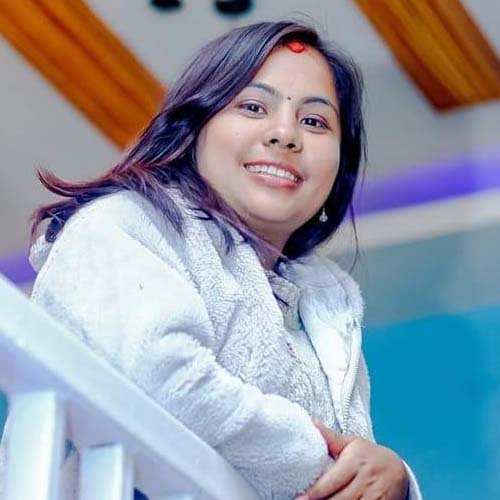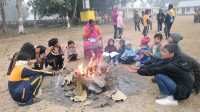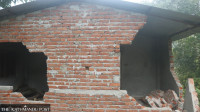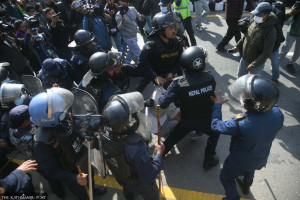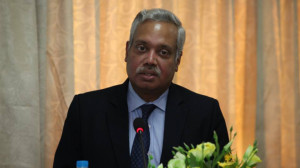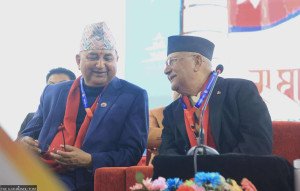National
Air rescue becomes lifeline for pregnancy emergencies in remote villages of Kavrepalanchok
A presidential scheme launched in 2018 has been providing air ambulance services to save remote area mothers with pregnancy complications.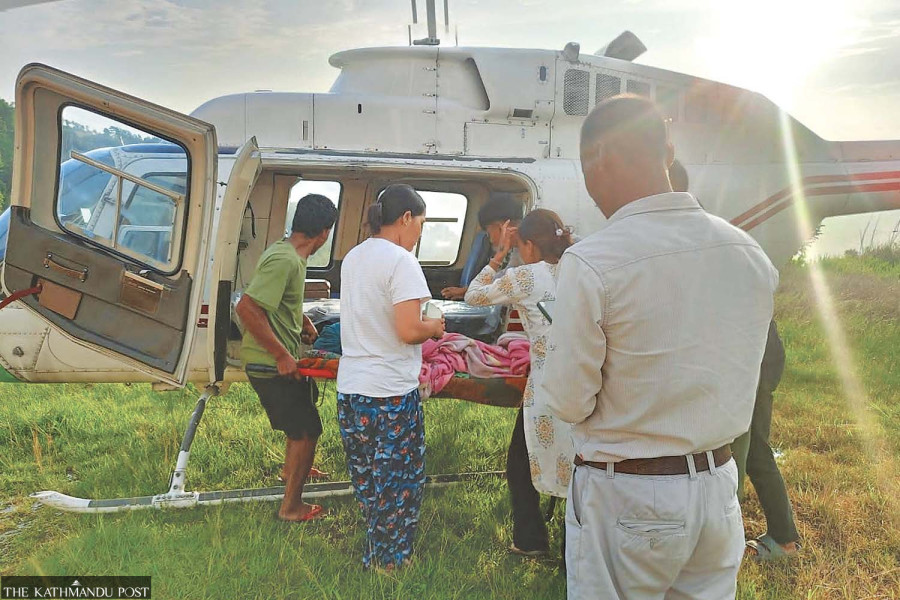
Jyoti Shrestha
Yogesh Thing from Lamatole in ward 6 of Mahabharat Rural Municipality in Kavrepalanchok district rushed his pregnant wife Sunita to Bankhuchaur Health Post after she went into labour on August 8. Health workers at the health post’s birthing centre initially assured him that her condition was stable. She was admitted at 7 pm, and through the night everything seemed under control.
By the next morning, however, Sunita’s situation began to worsen. “We tried our best here. But when the labour did not progress satisfactorily, we prepared to send her to Kathmandu. We began coordinating with the rural municipality and district administration from 9 am to arrange a helicopter,” said Sapana Waiba, auxiliary nurse midwife (ANM) at the health post.
Weather proved to be the biggest hurdle. It wasn’t until 4:30 pm that a Nepal Army helicopter could land, allowing her to be flown to Paropakar Maternity and Women’s Hospital in Thapathali, Kathmandu. A C-section at 9:30 pm delivered a baby girl. “The condition was critical. The timely airlift saved both mother and child,” Waiba said. The newborn, diagnosed with an infection, will remain under hospital care for a week.
A day earlier on August 7, 20-year-old Sujita Thing of ward 1 in Mahabharat Rural Municipality rushed to Gokule Health Post where she gave birth at 1:30 am. But within 12 hours, complications set in—urinary retention and swelling of the legs. “We exhausted all options available at the health post. By 10 am the next day we had sought help from the local unit and the district administration office, but due to weather and difficult terrain, we could only airlift her at 6 pm.” Sujita is now recovering at the Thapathali hospital.
These are not the isolated cases. Over the past three weeks, four women—two in labour and two post-delivery—were medevaced from Mahabharat Rural Municipality alone.
On July 24, Dev Kumari Pakhrin of ward 7 was referred from Bankhuchaur Health Post after prolonged labour failed to progress. She was flown to Kathmandu the next day. Similarly, on July 29, Renuka Lungeli of ward 1 was airlifted as her delivery was not possible for 18 hours of labour at Gokule Health Post.
The women and their newborns have been saved due to timely rescue. Such rescues are part of the government’s President Women’s Upliftment Programme, introduced in 2018 to save mothers in remote Himalayan and hill areas whose pregnancies or deliveries turn life-threatening. The operational guidelines define “at-risk” women as those with prolonged labour, obstructed delivery, intrauterine fetal death, swelling of extremities during pregnancy, excessive bleeding or severe anaemia. Transport is provided by planes or helicopters, coordinated between local governments and district authorities.
Mahabharat is a remote local unit in Kavrepalanchok, a hill district in Bagmati province. Mahabharat’s steep terrain and poor road access make emergency medical referrals particularly difficult during the monsoon. “Our location is geographically isolated. In the rainy season, patients from the remote villages must rely on helicopters,” said Kanchha Lal Jimba , chairman of the rural municipality. “In just three weeks, four women were rescued this way. The programme has made treatment accessible and saved lives.”
The municipality has no hospital—only a few health posts with birthing centers. Roads connecting to district headquarters are often blocked by landslides in the rainy season, forcing patients to wait hours or even days for rescue.
Although Nepal has made notable progress in reducing maternal mortality, geographical inequality remains stark. Women in remote hill and mountain districts face higher risks due to limited health infrastructure, shortage of skilled birth attendants and transportation delays.




 13.12°C Kathmandu
13.12°C Kathmandu